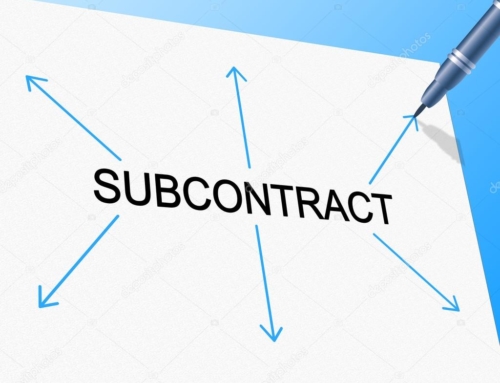If you have read my blog on how to become a vendor with the federal government or have heard me speak at any event, you already know that by law, 23% of all federal contracts must go to small businesses. Additionally, the law requires that government purchases between $3,000 and $100,000 be directed exclusively to small businesses.
So, what role does subcontracting have in the Federal Marketplace? Plenty! To win contracts worth $550,000 or more, large businesses must establish robust goals for small-business subcontracting. Subcontracting lets small companies reap some of the profits of government contracting without nearly as much paperwork. It’s also a good way to learn the ropes and build networks to win prime contracts.
First, I will explain the difference between a subcontractor and a prime contractor. A subcontractor is defined by Federal Acquisition Regulation (FAR) 3.502-1 as:
Any person, other than the prime contractor, who offers to furnish or furnishes any supplies, materials, equipment or services of any kind under a prime contract or a subcontract entered into in connection with such prime contract and includes any person who offers to furnish or furnishes general supplies to the prime contract or a higher tier subcontractor.
In other words, a prime contractor is engaged directly by the government agency (the client), whereas a subcontractor is engaged by a prime contractor to help complete the contracted work.
So, how do you become a subcontractor to a prime government contractor? Subcontracting possibilities are defined when a subcontracting plan is required on a federal government contract. Large prime contractors who have received federal contracts for goods and services other than construction, valued at more than $700,000, or for construction valued at more than $1.5 million, are required to establish plans and goals for subcontracting with small businesses.
The SBA’s SUB-Net database (web.sba.gov/subnet) posts subcontractor solicitations online; the agency also culls plans in big contracts to produce a Subcontracting Opportunities Directory, by state. The GSA’s eLibrary allows users to sort vendors for each schedule by state.
The best way is simply to go out and meet prime contractors, just like you do procurement officers. Any prime contractor with a subcontracting plan is required to designate a liaison to small business and make the contact information public.
Start with the small-business liaison officers at your target agency’s Office of Small and Disadvantaged Business Utilization, which lobbies the agency’s procurement officers on behalf of small businesses. (every agency has such an office). You can also meet them at procurement conferences sponsored by government agencies and private organizations. Be sure to send them a concise capabilities statement.
It is also highly recommended that you connect with the person who will be using your product or service. Make then your advocate so that they will want what you have to offer.






